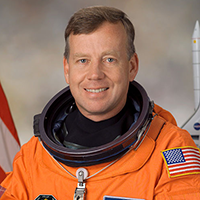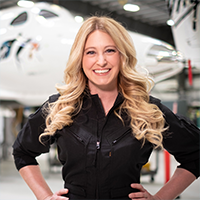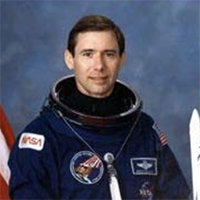Building on the Shuttle Legacy 5 January 2022 01:30 - 5 January 2022 02:30
Join us for a rebroadcast of one of the most popular sessions from the 2021 AIAA SciTech Forum! Take advantage of this rare opportunity to hear from these leaders in human spaceflight.
Forty years ago NASA’s Space Shuttle Program began. It was NASA’s fourth program for human spaceflight, with a mission to provide routine transportation to low Earth orbit with a reusable vehicle. Thirty years and only 133 missions later, shuttle Discovery concluded the program, arguably without completing the original vision. Or did it? Over the 30 years there were successes and failures, but the technological advancement and inspiration were to be the foundation for the next generation of commercial spaceflight.
Consider 28 January 1986 when STS-51-L lifted off from pad 39B at the Kennedy Space Center and 73 seconds later the Space Shuttle Challenger and her crew of seven were lost when a catastrophic structural failure occurred. The images from that day were burned into the memories of everyone watching and the moment was a turning point in our collective drive to explore space. Thirty-five years later, many of the people that watched that day are working to ensure the legacy and promise of the Challenger mission live on.
This conversation explores the impact Challenger, Columbia, and the overall Shuttle Program had on multiple generations of space explorers – what lessons have we learned, how has our outlook on human spaceflight evolved, why do the missions, specifically the Challenger crew, still resonate so strongly. Facilitated by veteran aerospace journalist Miles O’ Brien, the panel provides insights and stories that connect the dots to today’s human spaceflight outlook.
Moderator
-
 Miles O’Brien
Independent Journalist
Miles O’Brien
Independent Journalist
Panelists
-
 Anousheh Ansari
CEO
Anousheh Ansari
CEO -
 Steve Lindsey
Senior Vice President, Strategy Space Systems
Steve Lindsey
Senior Vice President, Strategy Space Systems -
 Beth Moses
Astronaut and Chief Astronaut Instructor
Beth Moses
Astronaut and Chief Astronaut Instructor -
 June Scobee Rodgers
Founding Chair
June Scobee Rodgers
Founding Chair -
 Brewster H. Shaw
Vice President and General Manager, Space Exploration, for Integrated Defense Systems
Brewster H. Shaw
Vice President and General Manager, Space Exploration, for Integrated Defense Systems
